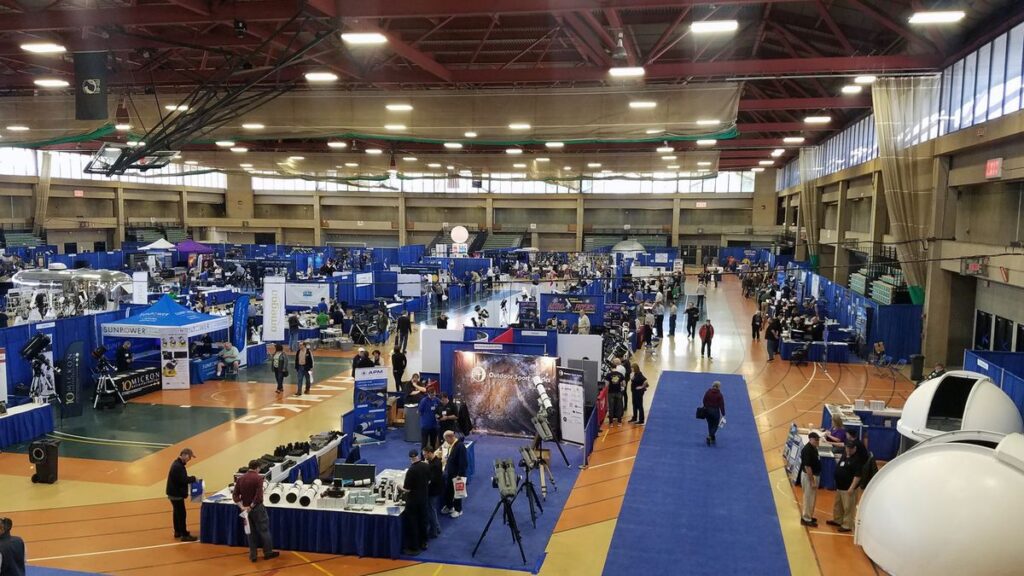Photos don’t do the northern lights justice.
To fully appreciate the glory and grandeur of this celestial display, which is also known as the aurora borealis, you have to settle beneath the ever-changing lights and watch them curve and curl, slither and flicker. Here’s how to see the northern lights.
Amazing auroras: Stunning northern lights photos
The first thing to appreciate is the glowing sky lights can be spectacular — or they can be a fleeting event. Robert Steenburgh, the acting lead of the Space Weather Forecast Office of the National Oceanic and Atmospheric Administration, has never seen the northern lights despite having studied them and related phenomena for more than 20 years. That’s not for lack of trying, as he once went on an aurora-focused trip to Yukon territory in Canada.
“It wasn’t really very visible to the naked eye, although people with adequate cameras could see it,” Steenburgh told Space.com, referring to cameras that can take long exposures to see faint things in the sky. “There was no geomagnetic storm going on [on the sun] at the time, so it was pretty low-key.”

But for those who are lucky enough to catch a strong display, the shimmering lights can appear like curtains, like pulses of jets or like other light-show phenomena — all available above your head, for free.
For best results, you can blaze your own trail somewhere along the “auroral zone” that encircles Earth’s northern reaches. But you need to know when and where to go. For example, the summer may be a good time for a vacation, but a better time to see auroras is actually between winter and spring.
Read on to find out when and where to see the northern lights, and what powers this dazzling display.
When to go

If you’re planning an aurora-viewing trip, try not to schedule it in the middle of summer. You need darkness to see the northern lights, and places in the auroral zone have precious little of it during the summer months.
Waiting might be a good time anyway, as summer 2021 is still a difficult time for international travel due to the COVID-19 pandemic. International overseas destinations might be closed due to local quarantine protocols, sometimes suddenly, so check guidance carefully before you go.
Another factor you may want to check is how active the sun is during a particular year. The sun goes through an 11-year cycle of activity and much of 2021 has been quiet as we’re just at the low end of the cycle. “The outlook is favorable as we go forward,” Steenburgh said of 2021. Solar forecasters are seeing upticks in active regions as well as in the coronal mass ejections of charged particles that are key to lighting up the northern lights.
You also want clear, dark skies, emphasizes Charles Deehr, a professor emeritus and aurora forecaster at the University of Alaska Fairbanks’ Geophysical Institute, whose guide to aurora viewing has lots of great information. Winter and springtime are generally less cloudy than autumn in and around the northern auroral zone, so a trip between December and April makes sense. Ideally, time your trip to coincide with the new moon, and make sure to get away from city lights when it’s time to look up, he added.
“Dress warmly, plan to watch the sky between 10 p.m. and 2 a.m. local time, although an active period can occur anytime during the dark hours,” Deehr wrote in the guide. “Active periods are typically about 30 minutes long, and occur every two hours, if the activity is high. The aurora is a sporadic phenomenon, occurring randomly for short periods or perhaps not at all.”
You can get an idea of how active the northern lights are likely to be in your area by keeping tabs on a short-term aurora forecast, such as the one provided by the Geophysical Institute. One predicting only the next half hour is available on NOAA’s Space Weather Prediction Website. Also, a citizen science website called Aurorasaurus gives on-the-ground instant information from aurora enthusiasts wanting to alert the community to new sky shows.
And you can have an aurora experience without even leaving your house if you so choose. The Canadian Space Agency offers a live feed of the skies above Yellowknife, in Canada’s Northwest Territories, during the fall, winter and spring when the sun goes below the horizon.
Where to go in Europe
So where should you go? If you live in Europe, the easiest thing to do is head to the far northern parts of Norway, Sweden and Finland. Many local people speak English in those regions and there are lots of tours available, assuming that quarantine protocols at the time of your trip permit these activities.
Visit Tromso’s 2021 northern lights info
Or you could check out a number of dark-sky locations, such as northern Sweden’s Abisko National Park.
“Abisko has developed a reputation for being the No. 1 aurora-watching destination on the planet, due to the fact that it is located in a very special microclimate with less precipitation than any other location on Earth that is located within the aurora zone,” photographer Chad Blakley told Space.com via email.
The company Blakley co-founded, Lights Over Lapland, has been offering aurora tours in Abisko since 2010. In 2018, the company released footage from a spectacular all-sky aurora during a geomagnetic storm on March 14.
Lights over Lapland’s 2021 Abisko aurora tours
Iceland is also a good choice, although cloudy skies may make it difficult to catch auroras on any one particular night. If possible, leave yourself extra time to accommodate inclement weather.
ViaTour northern lights night tour from Reykjavik
Russia does have a decent swathe of the auroral zone in the northern zones, but such areas are relatively hard to get to and lack the tourism infrastructure most travelers want. You might get lucky and spot auroras while being in a more well-trodden area such as Moscow or St. Petersburg, given those cities’ relatively high latitudes, however. But make sure to stay as far away from light pollution as feasible.
Where to go in North America
There are also plenty of options for good aurora viewing in North America. While far-eastern Canada tends to be cloudy, the shore of the Hudson Bay, the northern Canadian towns of Yellowknife or Whitehouse, or the west coast of Alaska are usually good bets. (The city of Fairbanks itself can be a great choice for seeing northern lights without needing to go too far in the wilderness.)
Northern Tales Yukon 2021 aurora tours
A traveler could also take a train across the auroral zone to the town of Churchill in Manitoba on the western shore of Hudson Bay — an area famous for its polar bear population.
Churchill Arctic Adventures tours
Otherworldly fireworks
The northern lights result when charged particles streaming from the sun collide with molecules high up in Earth’s atmosphere, exciting these molecules and causing them to glow.
“The key is you get energetic particles — things like electrons and protons — injected into Earth’s atmosphere along magnetic field lines, that are part of Earth’s magnetic field,” Steenburgh said. “They impact our atmosphere, and those interactions determine the colors.”
The different colors of the northern lights come from different molecules: Oxygen emits yellow, green and red light; while nitrogen is responsible for blue and purplish-red hues.
Earth’s magnetic-field lines channel these solar particles toward the planet’s north and south magnetic poles, which explains why auroras — the aurora borealis and its southern counterpart, the aurora australis — are high-latitude phenomena.
Indeed, the aurora borealis is visible most nights, weather permitting, within a band several hundred miles wide that’s centered at about 66 degrees north — about the same latitude as the Arctic Circle.
This “standard” aurora is generated by the solar wind — the particles streaming constantly from the sun. But solar storms known as coronal mass ejections (CME) can ramp up the northern lights considerably and make them visible over much wider areas. In 2019, for example, a CME allowed skywatchers as far south as Illinois and Ohio to get a glimpse. However, if you’re planning an aurora-viewing trip weeks or months in advance, you can’t count on any help from a solar storm and should therefore head to a destination somewhere near the northern ring.
Related: The sun’s wrath: Worst solar storms in history
The southern auroral ring lies above Antarctica and is very difficult for skywatchers, or anyone else, to get to. That’s why this article focuses on the northern lights — for reasons of practicality, not antipodean antipathy. (Southern Hemisphere dwellers take heart: The aurora australis can sometimes be viewed from New Zealand and Tasmania.)
There is also a mysterious, aurora-like brightening phenomenon in Earth’s atmosphere called “Steve” that isn’t attributable to aurora, although scientists aren’t sure of its cause. Finnish researchers have also been tracking dune-like shimmering lights that appear to be linked to gravity waves and oxygen atoms.

Earth isn’t unique in hosting auroras.
The huge gas giant planets (Jupiter, Saturn, Uranus and Neptune) each produce their own auroras, due to their magnetic fields and thick atmospheres. However, the colors of the gases change because of differences in each planet’s atmospheres and magnetospheres.
Venus and Mars also have auroras, of a sort. The Venus Express spacecraft found solar field interactions with the planet’s ionosphere forms a “magnetotail” that generates an aurora when the accelerated particles hit the atmosphere,. Mars has local auroras over magnetic fields in its crust, as well as a larger, northern hemisphere aurora generated from solar energetic particles hitting the atmosphere.
Editor’s note: If you capture an amazing photo of the northern lights and would like to share it with Space.com and our news partners for a story or gallery, send images to spacephotos@space.com.
This story, originally posted in April 2016, has been updated for 2021.
Follow Mike Wall on Twitter @michaeldwall and follow Elizabeth Howell on Twitter @howellspace. Follow us @Spacedotcom and on Facebook.


